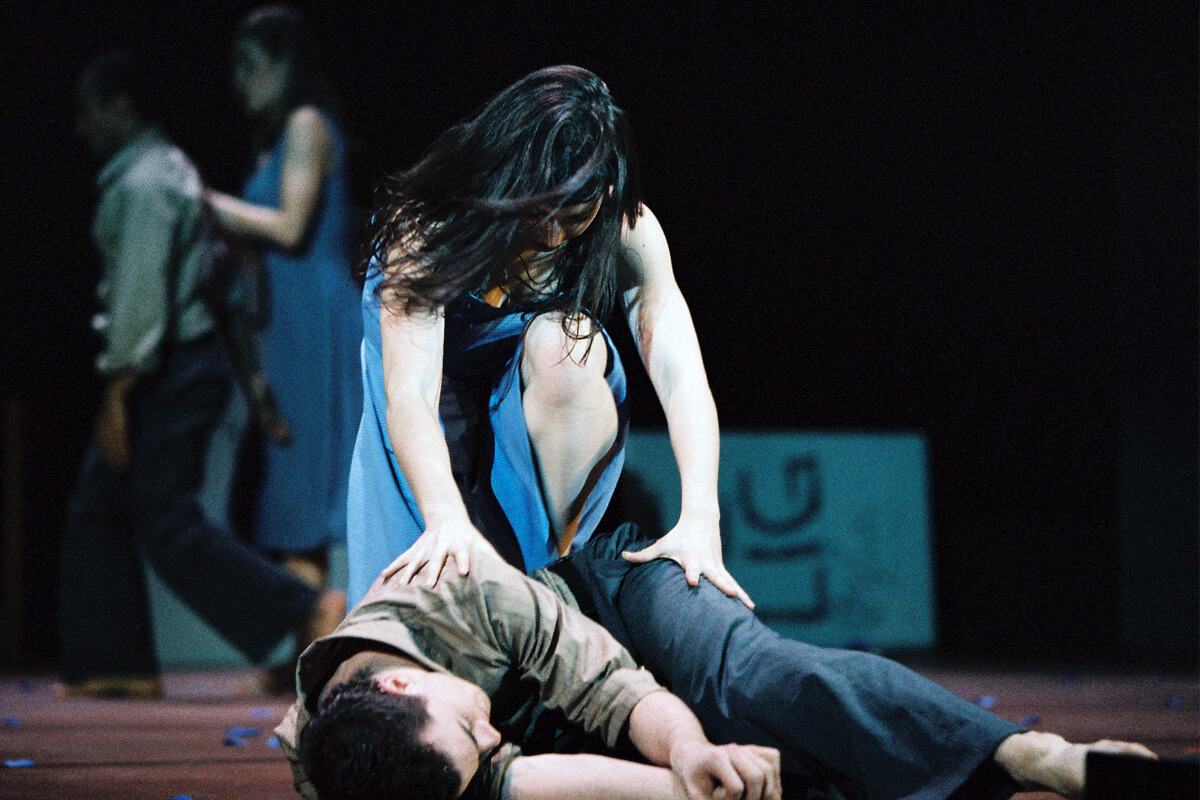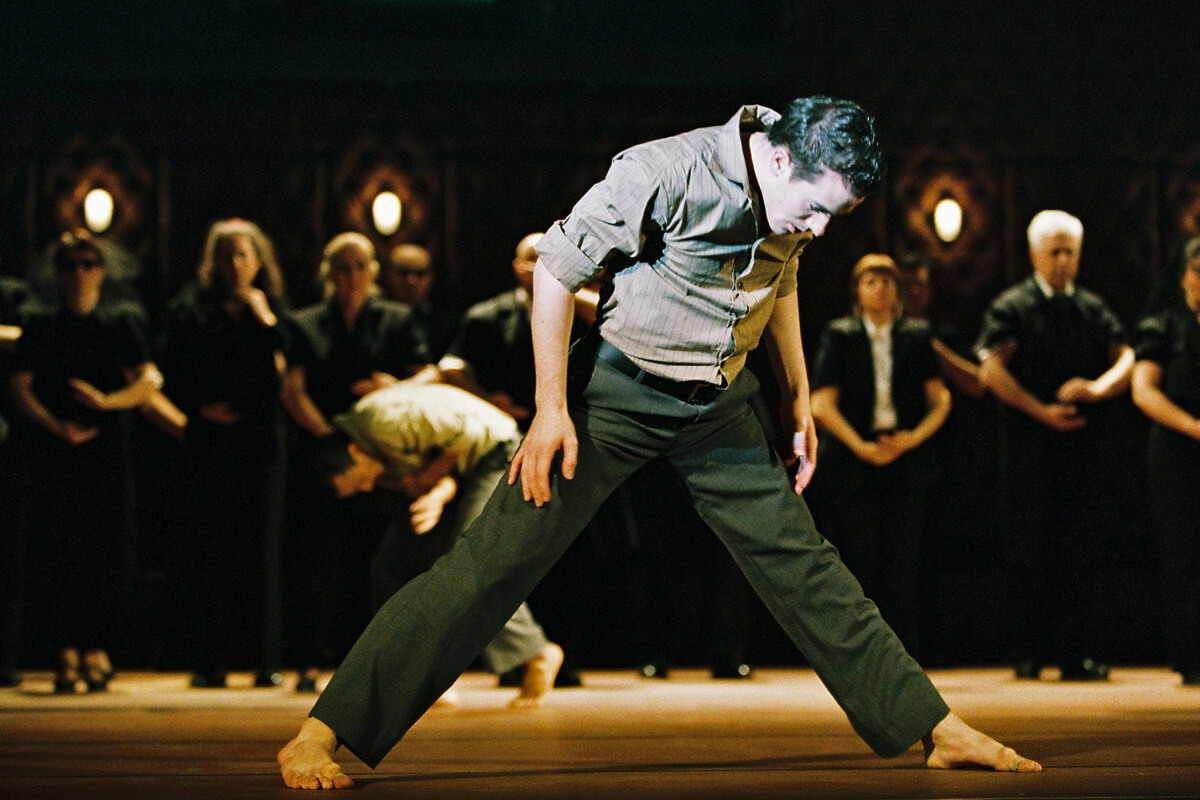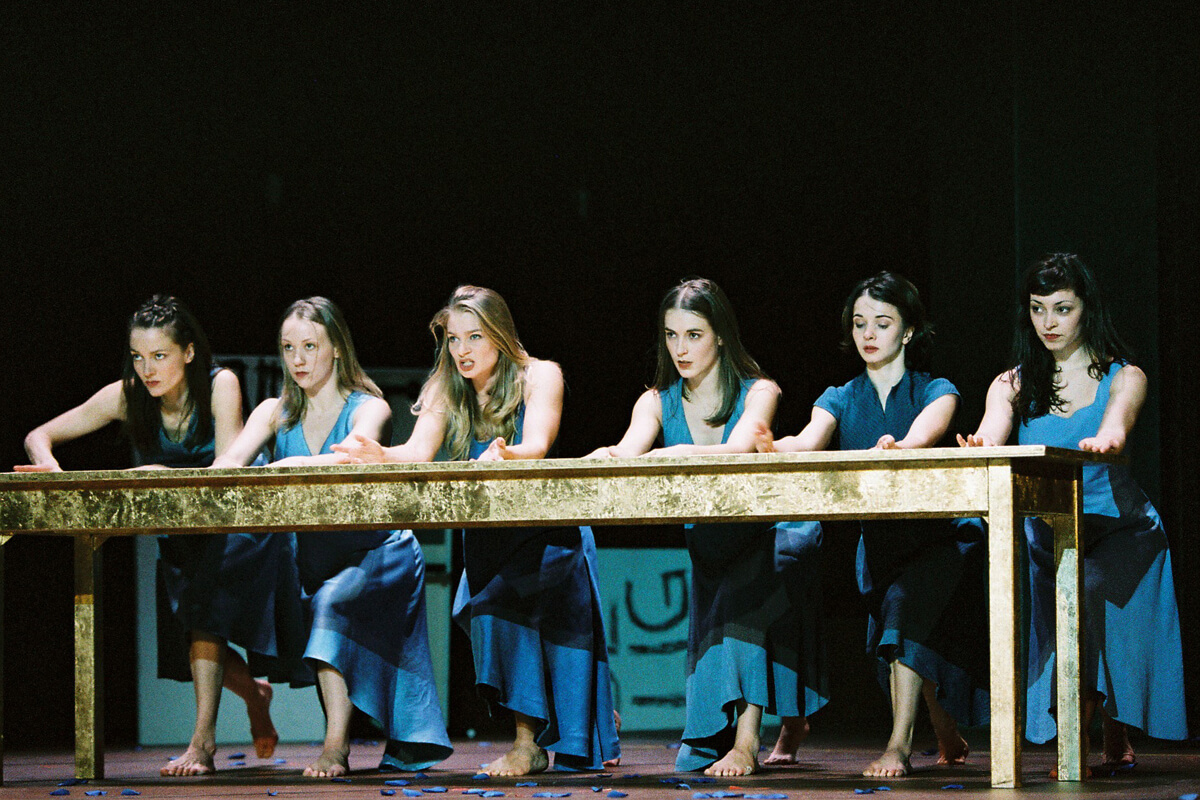ORPHEUS UND EURYDIKE
TANZTHEATER BIELEFELD & BIELEFELDER PHILHARMONIKER (2006)
ChoreographyGregor Zöllig
Choreographic AssistanceChristine Biedermann
MusicChristoph Willibald Gluck
ConductorCarolin Nordmeyer
Stage DesignTilo Steffens
VideoThomas Noack
Costume DesignRupert Franzen
PerformersStéphanie Bouillaud, Claudia Braubach, Anna Eriksson, Mirko Guido, Dirk Kazmierczak, Michael Loehr, Tiago Manquinho, Roberto Morales, Polina Ogryzkova, Brigitte Uray
SingersKaja Plessing (Orpheus) Victoria Granlund (Euridyke), Anke Briegel (Amor)
ProductionTheater Bielefeld
World Premiere27 January 2006 – Rudolf-Oetker-Halle, Bielefeld, Germany
Total Number of Performances11
PhotographyUrsula Kaufmann




Zöllig's approach of staging opera and dance simultaneously, presenting Orfeo and Euridice both as vocalists and through multiple dancers on stage [...] proves to be successful. What would be boring as an opera and too drawn-out as a dance piece becomes a fireworks display of impressions in this fusion, where the visual overload—the sheer abundance of impressions and events—creates the real excitement.

Gregor Zöllig stages Orpheus and Eurydice as a dance opera in Bielefeld. […] A thrilling and worth seeing experiment. [...] What his troupe has developed through improvisation is truly astonishing. […] Fantastic is how the dancers define the underworld—with their grounded, creature-like presence, twisted forms, and seemingly impossible, bizarre movement patterns.
The company responds with exceptional sensitivity to the deep psychological innervations of the music, causing a psychological chaos to rise behind the highly praised sublime beauty of the composition. [...] With their first opera production, Gregor Zöllig and his company have introduced a provocative, bold choreographic work to the conversation, bringing Bielefeld Theater to the forefront of contemporary dance.
It’s clear that Zöllig intentionally strays from a direct interpretation of the source material. [...] This approach is captivating. [...] Zöllig masterfully varies the motions of pulling, lifting, and turning away. In doing so, his concept of blending the contrasting elements of "statutory" singing and expressive dance in space truly comes to life.
Zöllig elevates the tale, which the composer had hammered into a happy ending, to a psychological level beyond simple enjoyment. For this, he continually finds powerful images. [...] Music drama and dance complement each other so well in the Bielefeld production because Gluck’s opera is simply structured and easy-going. Zöllig gives back to the tale what the opera took from it: complexity.

Christoph Willibald Gluck’s Orpheus und Eurydike received enthusiastic and sustained applause from the premiere audience. [...] Gregor Zöllig, presents the work as a dance opera in close collaboration with the dance ensemble. By having each vocalist mirrored by multiple dancers, he amplifies the emotional depth of the piece. The ensemble’s powerful and expressive movement language is nothing short of remarkable.


